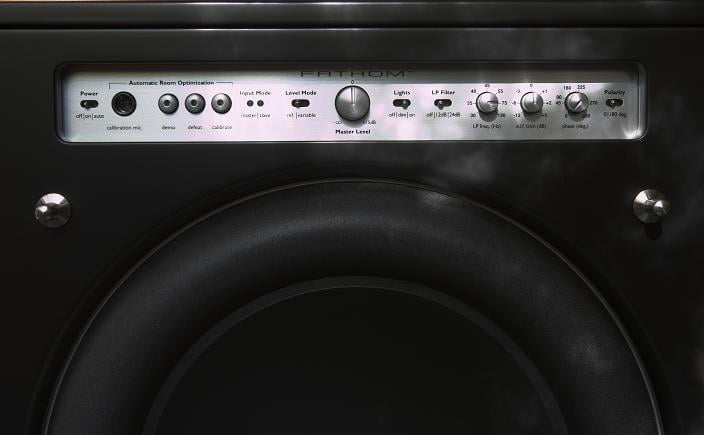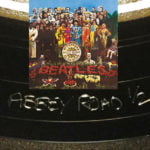It’s the time of year for saving money!
There are basically two ways to set up a subwoofer crossover with your main right and left loudspeakers. Each of the two schemes has advantages and disadvantages. Which one will work best with your particular system depends on many factors, including your room, your power amplifier, your subwoofer and, lastly, your main speakers.
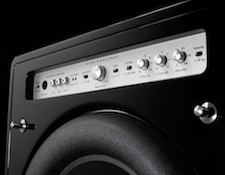 Both ways to set up your subs and mains involve the crossover settings. The first way to set up your system is with a crossover controlling both your main loudspeaker’s low frequency roll-off and your subwoofer’s high-frequency cutoff. This can be done several ways, but all involve using a crossover. Almost all subwoofers have a built-in crossover circuit that allows you to run your connections from your main power amplifier through this circuit. If you use the built-in crossover it divides the signal coming from your main amplifier. The primary advantage of using the sub’s built-in crossover is that it allows your main speakers to play with less strain since it relieves them of the burden of producing mid and low bass. But if you use an external crossover that relies on a line-level signal coming from the preamplifier rather than the power amplifier’s output you get another advantage – this method spares your main loudspeaker’s power amplifier the burden of producing low frequencies, which allows it to play with greater headroom since it is not required to expend as much effort producing those low frequencies. One of the disadvantages of this method is the limited options offered by most built-in subwoofer crossovers. Many offer only a few crossover “points” such as the THX-standard 80 Hz and/or 100 Hz. Also, the built-in crossovers have only a few fixed “slopes,” usually at 24 dB attenuation for the subwoofer coupled with a more gradual 12 dB slope for the mains low-frequency attenuation. And while these settings can work with some systems, on many others they do not deliver an optimal setting. An external crossover expands your options.
Both ways to set up your subs and mains involve the crossover settings. The first way to set up your system is with a crossover controlling both your main loudspeaker’s low frequency roll-off and your subwoofer’s high-frequency cutoff. This can be done several ways, but all involve using a crossover. Almost all subwoofers have a built-in crossover circuit that allows you to run your connections from your main power amplifier through this circuit. If you use the built-in crossover it divides the signal coming from your main amplifier. The primary advantage of using the sub’s built-in crossover is that it allows your main speakers to play with less strain since it relieves them of the burden of producing mid and low bass. But if you use an external crossover that relies on a line-level signal coming from the preamplifier rather than the power amplifier’s output you get another advantage – this method spares your main loudspeaker’s power amplifier the burden of producing low frequencies, which allows it to play with greater headroom since it is not required to expend as much effort producing those low frequencies. One of the disadvantages of this method is the limited options offered by most built-in subwoofer crossovers. Many offer only a few crossover “points” such as the THX-standard 80 Hz and/or 100 Hz. Also, the built-in crossovers have only a few fixed “slopes,” usually at 24 dB attenuation for the subwoofer coupled with a more gradual 12 dB slope for the mains low-frequency attenuation. And while these settings can work with some systems, on many others they do not deliver an optimal setting. An external crossover expands your options.
Using a more sophisticated external crossover, such as the Bryston 10B allows for more choices in crossover frequency and slope, but even the best analog crossover can’t deliver infinite options in terms of slope, crossover points, and attenuation levels. The most flexible subwoofer crossovers currently available are those done in the digital domain, but even with a digital crossover there can be some phase shift (but far less than an analog circuit) in the main loudspeakers near their low-frequency attenuation point that can create some discontinuity between the time domain of the main loudspeakers and the subwoofers.
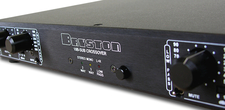 The second way to hook up a subwoofer with your main loudspeakers is to use a high-frequency cutoff for the subwoofer, just as we did with the first method, but allow the main speakers to work without any external crossover causing low frequency attenuation. Used full-range the mains will require more power, but they will have less extreme phase-shifts or group delays in their low frequencies, which can allow them to sound more like their designer intended and blend more seamlessly with the subwoofer. Often by using your mains as full-range loudspeakers you can also lower the crossover points of your subwoofers. This also has advantages.
The second way to hook up a subwoofer with your main loudspeakers is to use a high-frequency cutoff for the subwoofer, just as we did with the first method, but allow the main speakers to work without any external crossover causing low frequency attenuation. Used full-range the mains will require more power, but they will have less extreme phase-shifts or group delays in their low frequencies, which can allow them to sound more like their designer intended and blend more seamlessly with the subwoofer. Often by using your mains as full-range loudspeakers you can also lower the crossover points of your subwoofers. This also has advantages.
By using a 40 Hz crossover point instead of 80 Hz you have effectively reduced the subwoofer’s output at 80 Hz by 24 dB and at 160 Hz the subwoofer’s output is reduced by 48 dB as opposed to only 24 dB with the 80 Hz crossover point. This has two advantages – less subwoofer output muddying up the upper bass and lower midrange, and the subwoofer’s distortion will also be reduced (since producing those upper harmonics outside its optimum frequency range is a principle source of distortion in a subwoofer.)
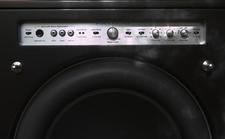 The primary disadvantage of letting your loudspeakers run without any low frequency attenuation is that it means that you have less control over how your room interacts with low frequencies. With a subwoofer handling all frequencies below 80 Hz you can position it so it interacts with your room’s intrinsic nodes (both boosts and attenuations caused by the room’s dimensions) in the most beneficial way. With your main loudspeakers producing low frequencies you have fewer positioning options – they must be placed to create a stereo image, which can sometimes also be a location that produces an excess or dearth of output due to a frequency alterations from a room’s dimensions augmenting or cancelling certain frequencies.
The primary disadvantage of letting your loudspeakers run without any low frequency attenuation is that it means that you have less control over how your room interacts with low frequencies. With a subwoofer handling all frequencies below 80 Hz you can position it so it interacts with your room’s intrinsic nodes (both boosts and attenuations caused by the room’s dimensions) in the most beneficial way. With your main loudspeakers producing low frequencies you have fewer positioning options – they must be placed to create a stereo image, which can sometimes also be a location that produces an excess or dearth of output due to a frequency alterations from a room’s dimensions augmenting or cancelling certain frequencies.
So, which method is best? As I mentioned at the beginning of this blog, there isn’t merely one factor to consider when setting up your subwoofer and main loudspeakers. In some systems I’ve used a crossover on both main loudspeakers and subs, while in others I’ve allowed the main loudspeakers to extend down naturally to their lowest frequencies and crossed over the subwoofer lower.
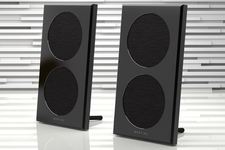 With my current reference system which uses the Spatial Audio M3 Turbo SE and a pair of JL Audio F112 subwoofers I use the second method. I originally set up the system with the Spatials crossed over into the JL Subs at 70 Hz, but in my room that caused too much bass in the corners of the room and not enough at the listening position. By switching to a set-up where the Spatial M3s were allowed to extend down without a crossover limiting their low frequencies I was able to get more bass at the listening position because the Spatials have more controlled dispersion between 160 and 80 Hz than the JL subs and interacted less with the room so there was less bass cancellation at the listening position. Also, with a lower crossover point, I got a cleaner upper bass and lower midrange response due to less subwoofer energy in this frequency range.
With my current reference system which uses the Spatial Audio M3 Turbo SE and a pair of JL Audio F112 subwoofers I use the second method. I originally set up the system with the Spatials crossed over into the JL Subs at 70 Hz, but in my room that caused too much bass in the corners of the room and not enough at the listening position. By switching to a set-up where the Spatial M3s were allowed to extend down without a crossover limiting their low frequencies I was able to get more bass at the listening position because the Spatials have more controlled dispersion between 160 and 80 Hz than the JL subs and interacted less with the room so there was less bass cancellation at the listening position. Also, with a lower crossover point, I got a cleaner upper bass and lower midrange response due to less subwoofer energy in this frequency range.
So, which method do you use with your subwoofers? I suggest that if you use one method, but have never tried the other, that you do so. It may be no better, but it could be. Given the complexity of room interactions, especially on low frequencies, unless you try both ways (and try several crossover points) you may never know what the optimal way to set up your subwoofer and main speaker’s crossovers actually may be…
